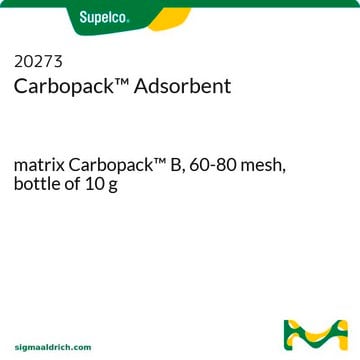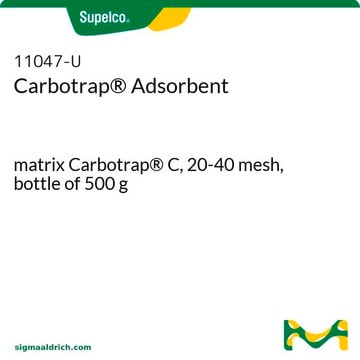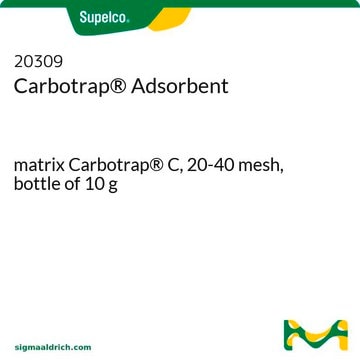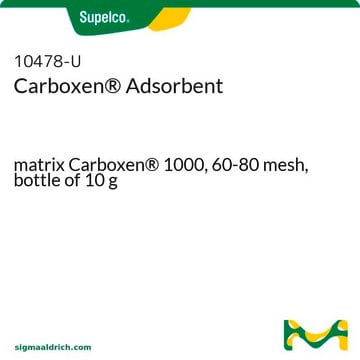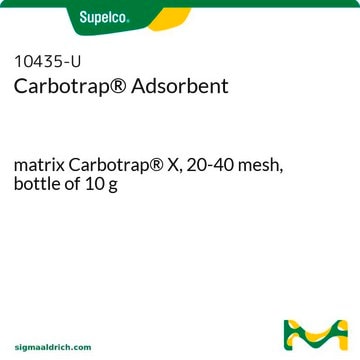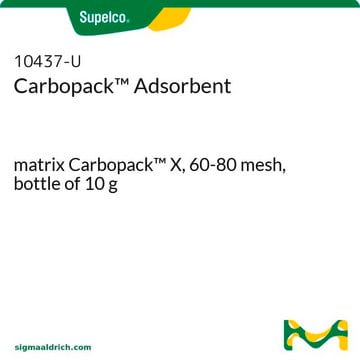20287
Carbotrap® Adsorbent
matrix Carbotrap® B, 20-40 mesh, bottle of 10 g
Wybierz wielkość
3040,00 zł
Wybierz wielkość
About This Item
3040,00 zł
Polecane produkty
linia produktu
Carbotrap®
Poziom jakości
Formularz
granular
opakowanie
bottle of 10 g
metody
LPLC: suitable
powierzchnia
~100 m2/g
Matryca
Carbotrap® B
grupa aktywna macierzy
carbon
wielkość cząstki
20-40 mesh
wielkość porów
0 Å pore diameter
~0 cm3/g macroporosity
~0 cm3/g mesoporosity
~0 cm3/g microporosity
gęstość
~0.38 g/mL (free fall density)
metoda separacji
reversed phase
Opis ogólny
- Granular
- Friable
- Used for molecules with an analyte size relative to C3-C20+ n-alkanes
- Hydrophobic (can be used in high humidity environments)
Generally, GCB adsorbents offer weaker relative adsorptive strength compared to carbon molecular sieve (CMS) adsorbents, and similar relative adsorptive strength compared to spherical graphitized polymer carbon (SGPC) adsorbents. Our Carbotrap products are a type of GCB adsorbent.
- Particles are 20/40 mesh
- These large particles allow high flow rates without excessive pressure drops
For more information about any of our specialty carbon adsorbents, please visit sigma-aldrich.com/carbon
Informacje prawne
Kod klasy składowania
11 - Combustible Solids
Klasa zagrożenia wodnego (WGK)
nwg
Temperatura zapłonu (°F)
Not applicable
Temperatura zapłonu (°C)
Not applicable
Środki ochrony indywidualnej
Eyeshields, Gloves, type P3 (EN 143) respirator cartridges
Wybierz jedną z najnowszych wersji:
Certyfikaty analizy (CoA)
It looks like we've run into a problem, but you can still download Certificates of Analysis from our Dokumenty section.
Proszę o kontakt, jeśli potrzebna jest pomoc Obsługa Klienta
Masz już ten produkt?
Dokumenty związane z niedawno zakupionymi produktami zostały zamieszczone w Bibliotece dokumentów.
Klienci oglądali również te produkty
Active Filters
Nasz zespół naukowców ma doświadczenie we wszystkich obszarach badań, w tym w naukach przyrodniczych, materiałoznawstwie, syntezie chemicznej, chromatografii, analityce i wielu innych dziedzinach.
Skontaktuj się z zespołem ds. pomocy technicznej
